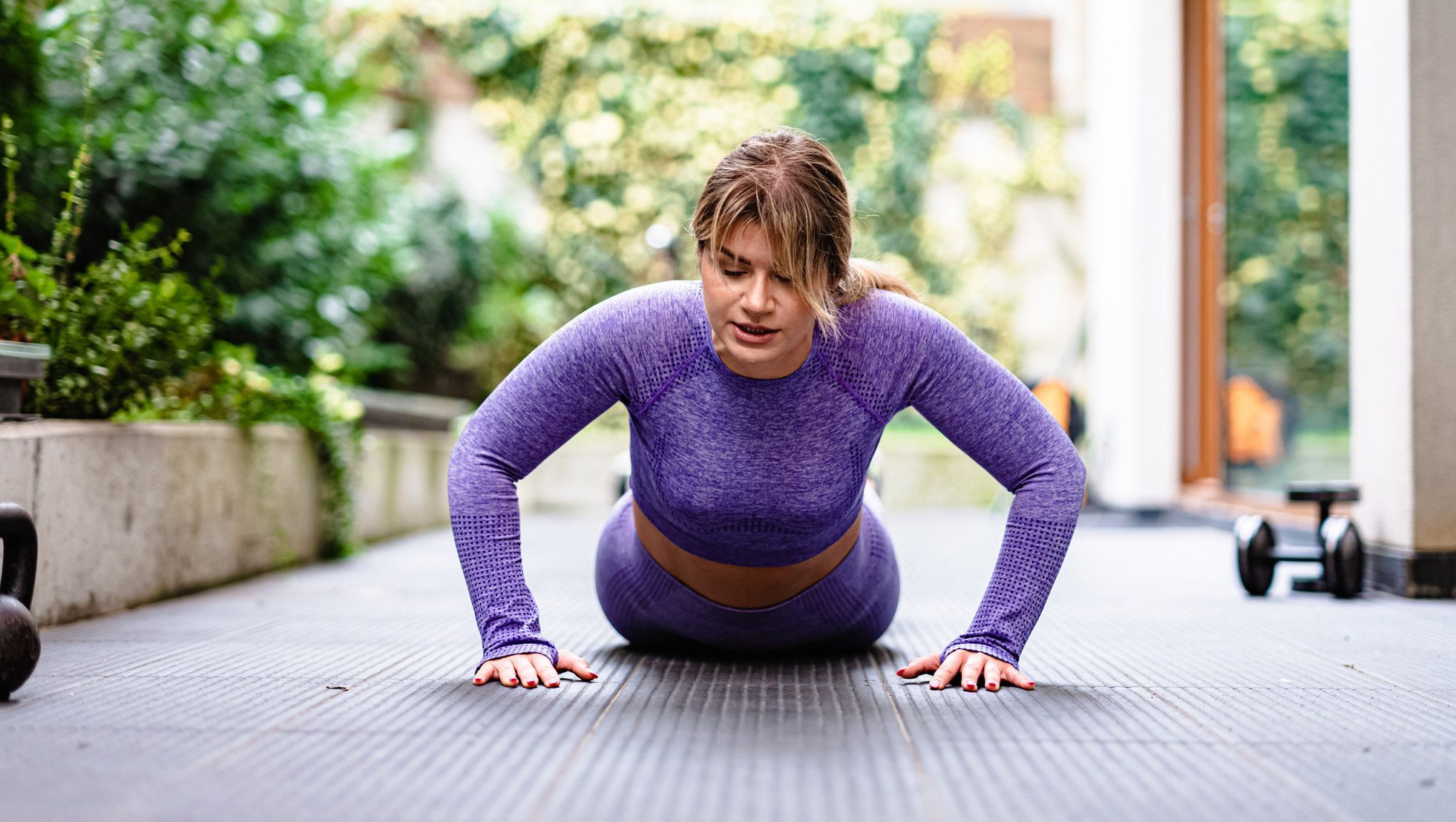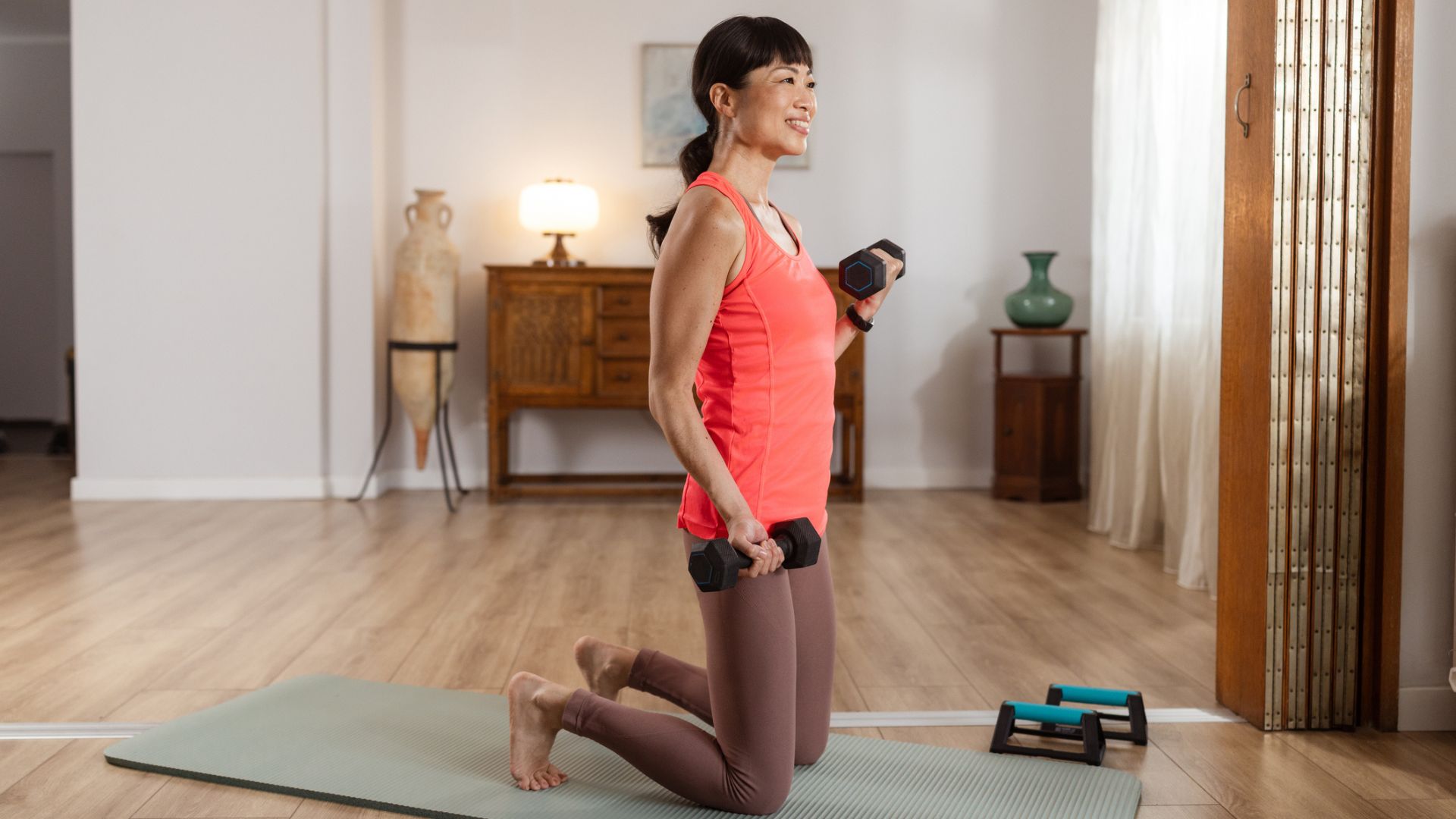Still struggling with push-ups? Here are the four most common mistakes that could be holding you back, according to an expert
Almost everyone does number one

Push-ups aren't overly complicated, as far as exercises go, but that doesn't mean they're easy. As fatigue mounts, mistakes tend to creep in.
To address these missteps I spoke to Sherri McMillan, the owner of Northwest Personal Training in Vancouver, Washington. Here are four of the most common push-up pitfalls she's encountered over a career spanning more than 35 years, along with her expert tips on how to fix them once and for all.
Four common push-up mistakes
If you need a refresher on form, start with our guide to how to do a push-up.
1. Disengaging your lower back
In a perfect world your shoulders, hips, knees and ankles would remain in a straight line during the push-up, but often the lower back is the first area to cave, allowing the hips to sag and pressure to build at the base of the spine.
Avoid this issue by squeezing your glutes at the start of the move and curling your tailbone under to engage your core and lower-back muscles, and purposefully keep your hips and pelvis rock solid.
“Think about keeping your back flat and elongated throughout,” says McMillan. “Keep your neck neutral throughout too by looking straight down at the floor,” rather than craning to check out your reflection in the mirror.
2. Rushing and no-repping
When staring down 10, 20 or even more than 30 push-ups, it can be tempting to race through them as fast as possible. Why's this a mistake? Because it's unlikely you'll be performing the exercise with a full range of motion—arms completely straight at the top, chest just off the floor at the bottom—meaning your muscles won't be training through their full range, and you'll be missing the gains you might have made with perfect form.
Get the Fit&Well Newsletter
Start your week with achievable workout ideas, health tips and wellbeing advice in your inbox.
A simple fix is to forget about a rep target and work against the clock instead. “Use a count of 1-2 on the up-phase, and a count of 2-4 on the down-phase,” suggests McMillan.
3. Flaring out your elbows
Hand position and elbow flare are pivotal to a good push-up. If your hands are set too narrow, you'll force your triceps to bear most of the brunt. Too wide and your elbows will flare out, making it harder to retract your shoulder blades.
The sweet spot, says McMillan, is to keep your hands around shoulder-width apart and elbows tucked in close to your body from the first rep to the last.
Why is retracting your shoulder blades helpful? Because by retracting your shoulders and keeping your elbows tucked in close to your body you'll better engage the large mid- and upper-back muscles of the rhomboids and latissimus dorsi.
These antagonistic muscles work in conjunction with your pectorals when performing a push-up, helping you to generate maximum force from your first rep to your last.
4. Overreaching with your hands
To start a push-up you place your hands under your shoulders, right? Well, not so fast. Your hands should in fact be positioned closer to your midline, level with the middle of your chest, to give you the best chance of powering into each rep, says McMillan. Any further and you're putting extra demand on your core to hold everything together.
To get your hand placement spot on, McMillan recommends starting flat on the floor, chest down. Place your hands directly beside your pecs so that your thumbs are brushing your chest. If you can muster the energy, drive up from this position into your first rep, otherwise press your knees into the floor to help you get into your starting stance. Ready? Let's go.
Sherri McMillan is the owner of Northwest Personal Training in Vancouver, Washington, and an international fitness presenter, personal trainer, fitness columnist and author of five books and manuals including Go For Fit - The Winning Way to Fat Loss and Fit Over Forty.
Accredited via the Health & Fitness Association, McMillan holds a bachelor's degree in Exercise Physiology from the University of Windsor, and a master's degree in Exercise Physiology from the University of British Columbia, both in Canada.
Across a career spanning more than 35 years, she has received numerous industry awards including 2010 CanFitPro International Fitness Presenter of the Year, 2006 IDEA Fitness Director of the Year, 1998 IDEA Personal Trainer of the Year and 1998 CanFitPro Fitness Presenter of the Year.

Sam Rider is an experienced freelance journalist, specialising in health, fitness and wellness. He is also a REPS level 3 qualified personal trainer.
-
 Do your gut a favor with this dietitian's gut-friendly veggie-filled fried rice recipe
Do your gut a favor with this dietitian's gut-friendly veggie-filled fried rice recipeKeep your tummy happy with this flavorful twist on a favorite
By Lou Mudge
-
 I’m a personal trainer and these are some of my favourite exercises to build core and upper body strength at home
I’m a personal trainer and these are some of my favourite exercises to build core and upper body strength at homeAll you need is a set of dumbbells for this kneeling workout
By Maddy Biddulph